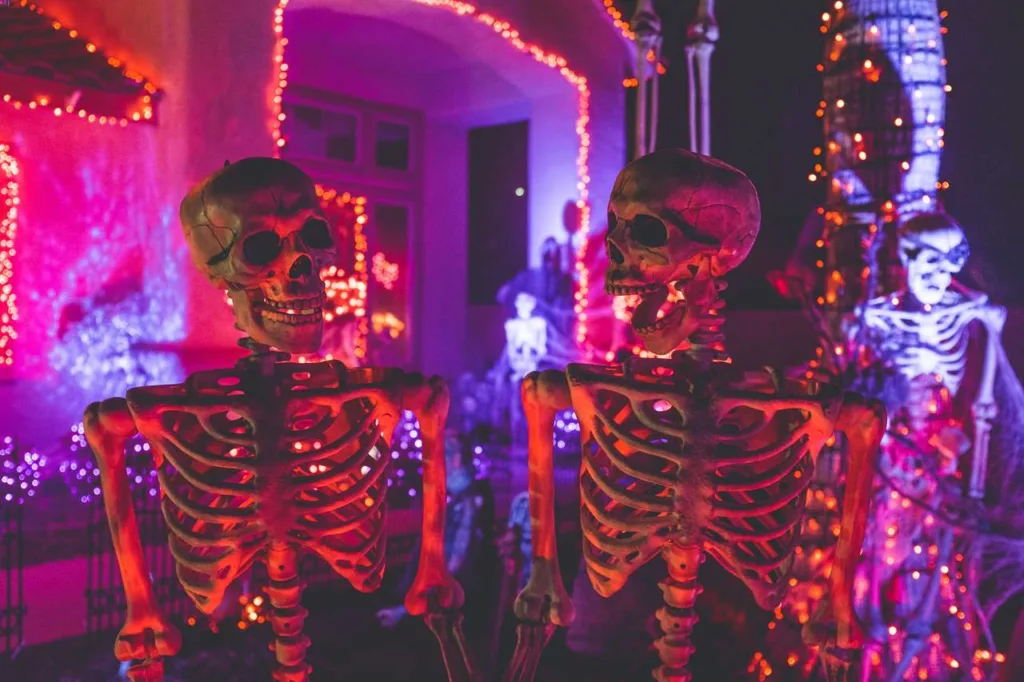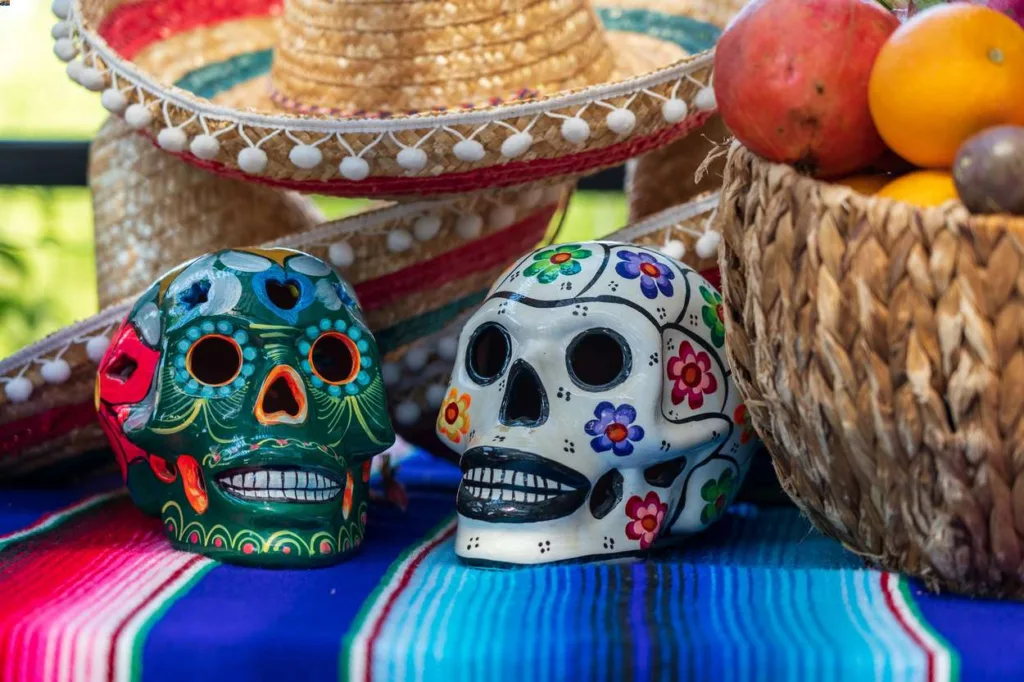The Day of the Dead, also referred to as Día de los Muertos, is a revered custom in Mexico that has been practiced for centuries, tracing its roots back to ancient times.
The holiday in the US is often recognized by the presence of papel picado, calaveras, and marigold flowers. Its prominence is further highlighted in the movie “Coco” and the opening scene of “Spectre.”
Día de los Muertos is a commemoration of the afterlife, a day dedicated to honoring the departed and preserving their memory. In contrast to Halloween, which traditionally served as a means to repel malevolent spirits, the Day of the Dead primarily focuses on paying homage to beloved individuals who have passed away.

Here’s what else you need to know about this special day.
When is Day of the Dead?
The celebration of Day of the Dead commences on November 1 and concludes on November 2. This period is marked by the belief that departed souls revisit their loved ones to reunite with them.
Who celebrates Day of the Dead?
Other countries, including those outside Latin America, also observe their own versions of the Day of the Dead, despite its predominant association with Mexico. In the Philippines, this holiday is known as Undas and is commemorated on the initial two days of November. Similar to the Mexican tradition, Filipinos pay visits to the graves of their departed loved ones and construct altars in their honor.
What are the origins of Day of the Dead?
Day of the Dead has its roots in the ancient customs of Indigenous communities in the Americas, particularly the Aztecs. The Aztecs observed a sacred ritual called Miccaihuitl, dedicated to paying homage to the deceased.
However, with the arrival of the Spanish in the Americas, Catholicism was introduced, bringing along its own observances: All Saints’ Day on November 1st and All Souls’ Day on November 2nd, both of which honor the departed. The Spanish then merged their religious festivities with the existing Indigenous traditions, giving rise to the vibrant celebration known as Día de los Muertos.
What are Day of the Dead traditions?
On the Day of the Dead, numerous individuals pay tribute to their deceased relatives and loved ones by visiting their graves. However, the purpose of their visit is not solely to mourn; rather, they engage in activities such as cleaning the graves and headstones, as well as adorning them with vibrant flowers. While some individuals may choose to offer prayers, others opt to fill the atmosphere with melodious tunes. The ambiance during this occasion closely resembles that of a festive gathering, complete with music, delectable food, and refreshing beverages. It serves as a time for people to come together and share anecdotes about their cherished ones, thereby ensuring their memory lives on.
In Mexico, several cities commemorate the occasion by organizing parades and festivals. A significant number of individuals choose to adorn their faces to resemble a bare skull and don costumes. Notably, women often embrace the role of La Catrina, an elegant female skeleton portrayed wearing an exquisite gown and an extravagant hat that gracefully extends over her head.
It is worth noting that the concept of characters like La Catrina has evolved into a symbol of Día de los Muertos. However, the origins of this imagery can be traced back to the artistic creations of José Guadalupe Posada, a Mexican artist who sketched it in 1910 as a satirical representation of the country’s upper classes.

What are ofrendas?
Altars, known as ofrendas, hold a significant place in the Day of the Dead tradition. These revered structures are meticulously constructed in various settings such as homes, schools, and public spaces, serving as a heartfelt tribute to the departed.
Family members will place a large photo of the loved one on the altar, accompanied by vibrant papel picado, which refers to “perforated paper.” The colorful tissue papers symbolize air, representing one of the four elements depicted in the altars. Throughout the altars, marigold petals are also incorporated, serving as a guide for the spirits to find their way back home with their vivid hues and strong fragrance. Additionally, candles are commonly found on the ofrendas, serving the dual purpose of illuminating the path and symbolizing the departed. Pan de muerto, a traditional Mexican pan dulce deeply rooted in Aztec customs, is also frequently included. Furthermore, sugar skulls, often placed on the ofrendas, serve as a reminder of the ever-present nature of death.
As a means of purifying the visiting souls, salt is often placed in the shape of a cross on or near the ofrenda. Additionally, families may include a container of water and sometimes tequila on the altar to quench the thirst of the souls after their journey. Altars can also be personalized with the deceased’s favorite food or personal tokens, such as a favorite book or shirt, as a way of remembering and honoring them upon their return.

